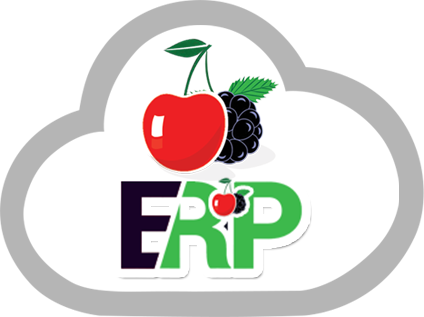How Human Resource Software is Revolutionising Workforce Management?
A company’s numerous human resources procedures can be automated and made simpler with the help of comprehensive programs known as human resources software. This software encompasses a wide range of tasks, including initial orientation, instruction, payroll, benefits management, worker participation, performance evaluation, and recruitment. Modules for human resource management combine several functions into a centralised system to increase productivity, streamline procedures, and offer useful data for defensible decision-making. Human resource software’s primary goal is to manage the staff of an organisation, which is also its most valuable asset. Let’s examine the intricacies of HR software and how they help modern businesses streamline their HR processes.
Advantages of HR Software
Effectiveness and Economic Benefits
By automating repetitive tasks and eliminating manual paperwork, Human resources software improves productivity, reduces administrative burdens, and lowers operational expenses associated with HR functions.
Data Accuracy and Compliance
These modules assist organisations in maintaining compliance with labour laws and regulatory requirements. It ensures that employee records are kept up to date, and ensuring that compliance with data standards is maintained.
Improved Worker Experience
Human Resource modules contribute to the enhancement of worker satisfaction by facilitating the acceleration of procedures, providing alternatives for self-service, enabling prompt communication, and providing assistance with employee development programs.
Strategic Human Resource Planning
Human resource professionals who have access to extensive data and analytics can participate in strategic workforce planning. Which includes talent management, succession planning, and HR initiative alignment with organisational goals.
Scalability
Human Resources software exhibits scalability and adaptability. It enables them to effectively cater to the changing requirements of expanding enterprises, shifts in workforce composition, and the emergence of novel HR practices.
Features for Human Resource Software
Management of Employee Databases
These modules serve as hubs for storing employee data, such as resumes, hours worked, performance reviews, and training documents. This centralised database facilitates access to relevant information and ensures data accuracy.
Management of Performance
Human Resource Software simplifies activities such as goal-setting, performance evaluations, feedback channels, and performance monitoring. They pave the way for analytics to spot high performers and problem areas, continual feedback loops, and 360-degree evaluations.
Development and Training
With the built-in training modules in HRM systems, it’s much easier to design, administer, and monitor employee training programs. They are in favour of online training, credentials, skill assessments, and personalised training programs for employees to raise their level of competence.
Onboarding and Recruitment
Human Resource software expedites the hiring process by managing programs, sharing job positions, scheduling interviews, and conducting background checks. They also contribute to a seamless onboarding process by creating checklists for new hires, digitising documentation, and integrating learning administration systems for training.
Administration of Payroll
The administration of payroll includes the processing of payroll, which includes the administration of employee benefits, automated calculations of salaries, and the processing of taxes and bank deposits. Human Resource modules provide all of these services. They perform tasks such as verifying compliance with payroll regulations, generating accurate pay stubs, and accelerating the processes of enrolling new employees and administering benefits.
Employee Self-Service
Through the use of Human Resource software, staff members are granted access to self-service sites, where they are able to make changes to their personal information, submit requests for time off, view company guidelines, and take part in performance reviews. When they use self-service features, human resource managers have fewer tasks to complete. Moreover, they have more fun while they are at work.
Analytics and Reporting
With the assistance of HR software’s robust reporting and analysis capabilities, human resources professionals can make informed strategic decisions. These capabilities enable them to generate personalised reports, analyse workforce trends, track key performance indicators (such as turnover and absenteeism rates), and more.
Submodules for Human Resource Software
Payroll Management
Payroll submodules, which are often linked to Human resource software, embrace automated processes. A third or more of small businesses spend six hours or more each month on payroll processing. Moreover, when integrated with employee-shared data like time and performance tracking, payroll can precisely compute wages, benefits, taxes, and deductions.
Time and attendance tracking
This module will be in charge of managing leave requests and monitoring overtime. It will also be responsible for managing attendance. As a consequence of this, the managers of each department inform the heads about the absences of employees.
Providing Information
There is a significant improvement in the ability of employees to generate insightful reports and analytics when they have access to data that is coming in from all over the company. When it comes to Human Resource Software, it can perform two functions simultaneously: it can reduce the amount of time spent gathering insights by fifty percent and it can enhance decision-making by providing accurate data on employees.
Recruitment
When it comes to recruitment, HR managers have access to dashboards that show data on things like:
- In industry, the average age of employees
- The bulk of workers’ locations (nationality, division, etc.)
- When contrasted with the typical personnel turnover rate
Recruitment gathers data from submodules, like performance tracking, using HR software to identify business areas that need employee recruitment.
Growth and Employee Onboarding
To guarantee that companies are offering the most effective and efficient onboarding experiences, onboarding submodules utilise integrated data. Automation of functions guarantees that new hires are given the right tools (laptops, uniforms, etc.) for the job at the right time. The next step involves tracking the employees’ skill development, organising orientations based on that data, and identifying the types of training needed by monitoring the onboarding process.
Conclusion
Organisations can maintain a competitive edge in the ever-changing business landscape of today by streamlining processes, cultivating a productive workforce, and utilising the advanced capabilities of Human Resources software. Strategic HR practices can be implemented and used more effectively, which can lead to long-term organisational success and growth as HR modules are now essential tools for contemporary businesses looking to maximise Human Resource operations, improve employee satisfaction, and spur financial success.
